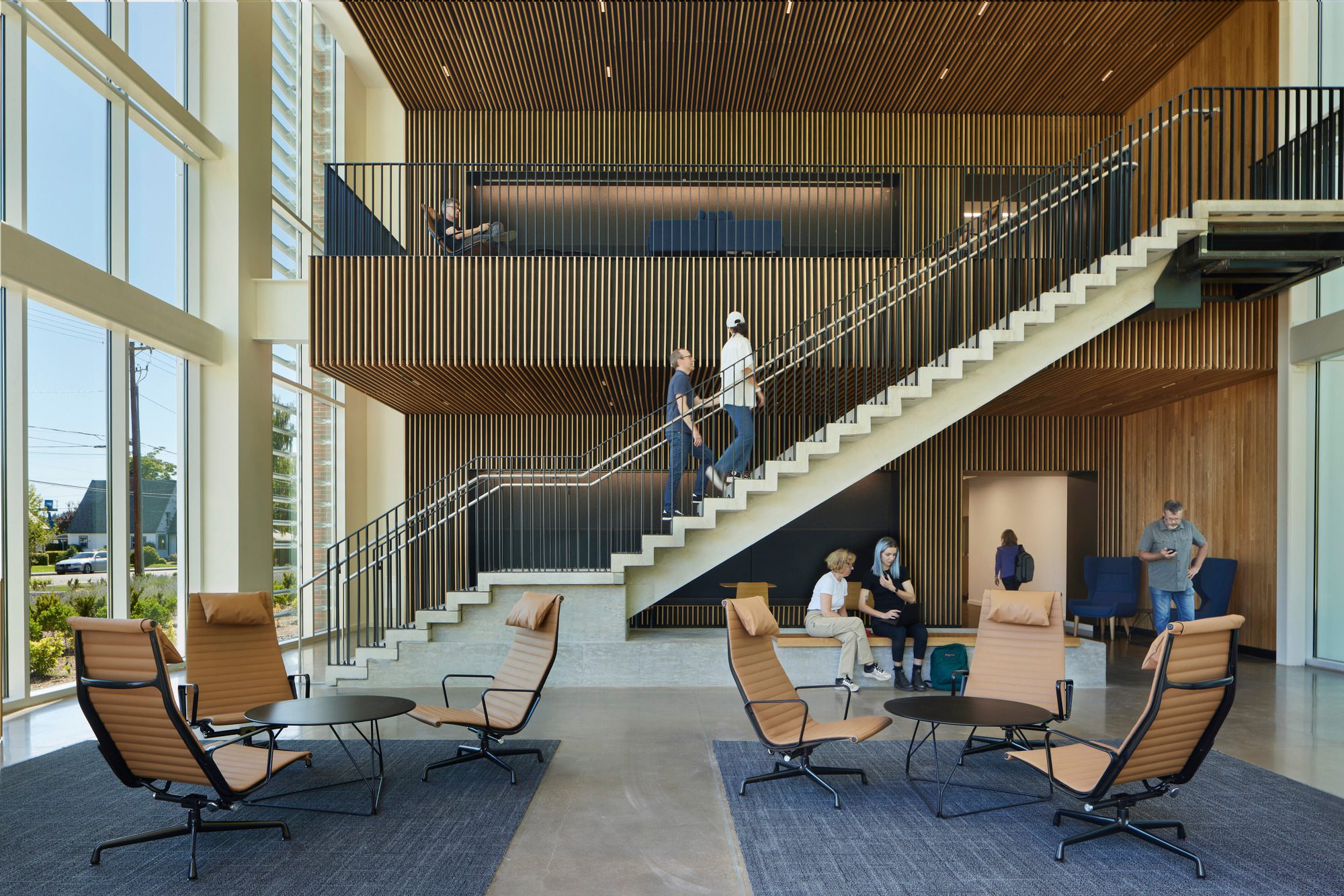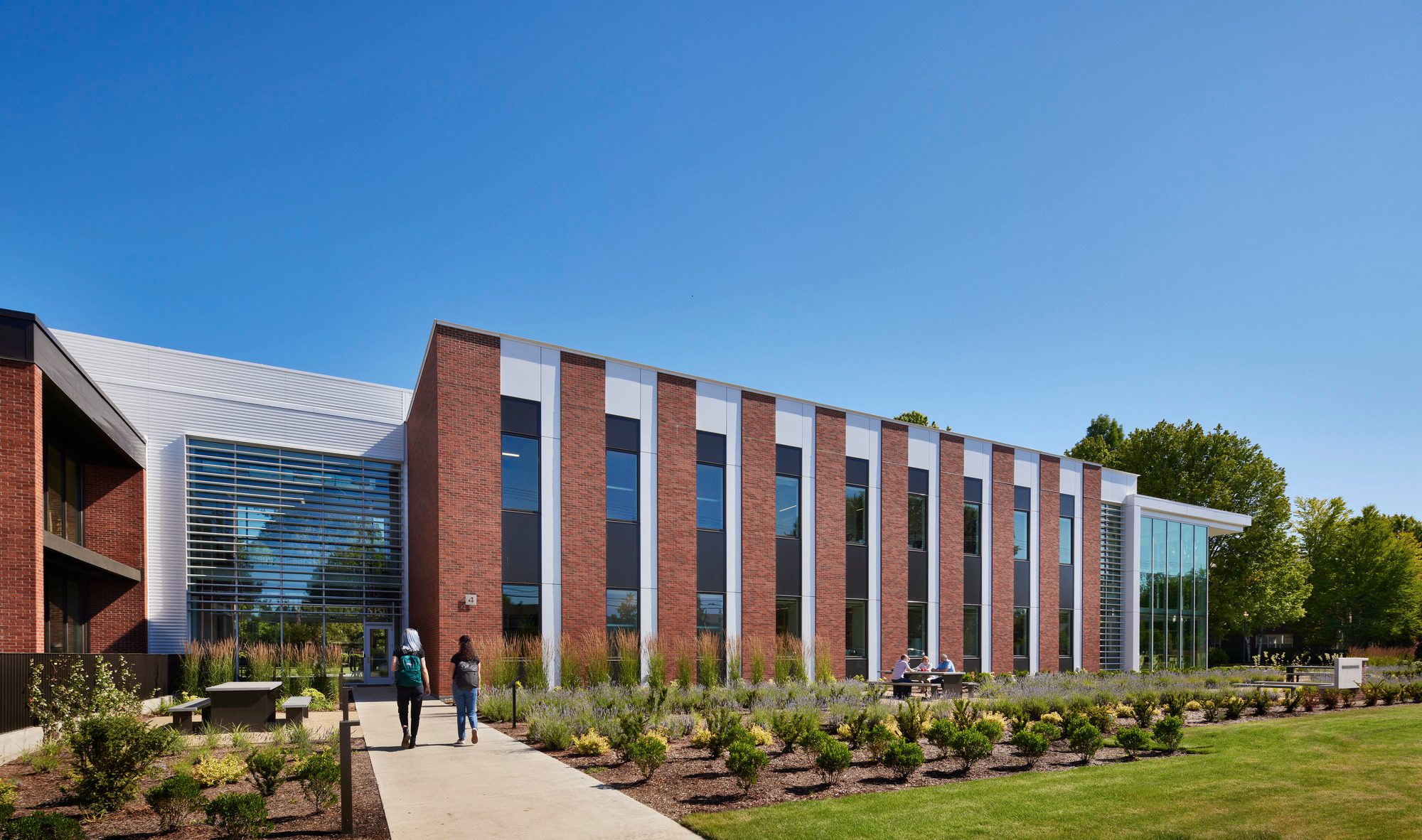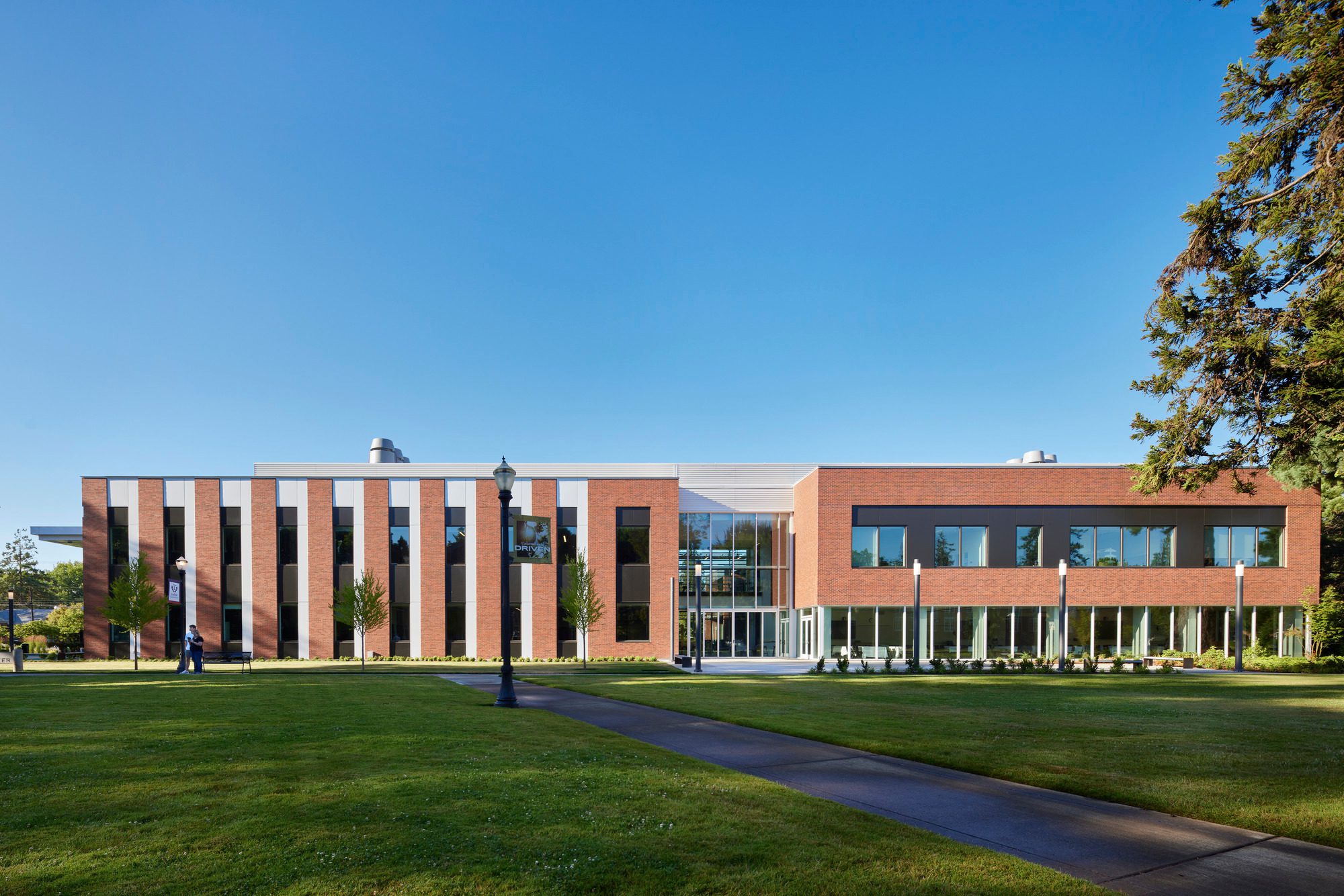Faculty and Student Research on a Growing Campus
Connecting Graf Hall, Keck Hall, and Murdock Hall facilitates interdisciplinary research and discovery at the Science Center. To encourage collaboration between the sciences, departments are arranged in “neighborhoods” adjacent to wayfinding paths and grouped near shared research hubs. Upper division labs connect to research facilities and encourage joint use of learning spaces. The heart of the Science Center is the central, grouped learning spaces adjacent to faculty offices. Students can choose to utilize both lively and quiet study zones with access to labs, professors, and peers.










